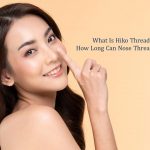Sunken eyes can significantly impact one’s appearance, leading to a tired or aged look. Fortunately, there are effective solutions available to rejuvenate the under-eye area. One popular method is eye filler Singapore, a treatment that restores volume and reduces the hollow appearance beneath the eyes. Additionally, advancements in cosmetic procedures now offer scarless eye bag removal, ensuring a refreshed look without visible signs of surgery.
What are Sunken Eyes?
Individuals with sunken eyes have delicate skin over their eyes that appears darker and sunken, giving their eyes a hollow appearance. Sunken eyes can become a source of cosmetic concern, and over the years a number of methods have been introduced to improve sunken eyes.
What Causes Sunken Eyes?
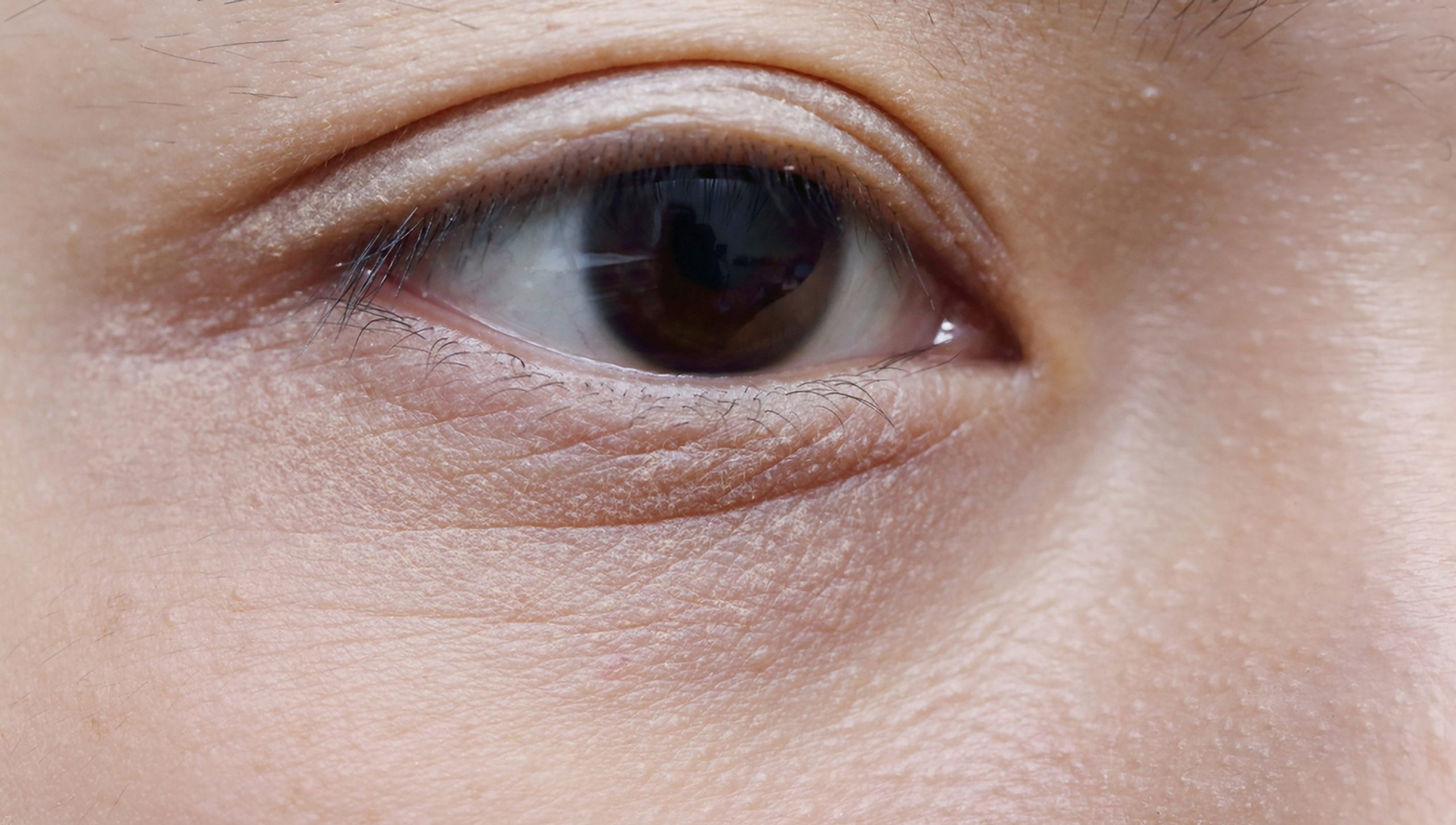
There may be a number of reasons for sunken eyes, which include genetics, lifestyle factors, vitamin deficiency, aging, and dehydration.
Genetics
Genetics may play an important role in the development of sunken eyes. Sunken Eyes, which have been caused by genetics are present since birth. Moreover, parents with sunken eyes are more likely to have children with the same appearance of eyelids. This is because of their unique bone structure, which makes their eyes appear hollow.
Lifestyle
Lifestyle factors like smoking, alcohol consumption, and staying up late at night are other reasons which may lead to the development of sunken eyes. Habitual smokers are more likely to have a degradation in the collagen content of their skin and eyelids. This causes a lack of elasticity in the skin, and the skin ends up losing its thickness. The thin and sagging skin over the eyelids promotes a hollow appearance of the eyelids.
Vitamin Deficiency
A deficiency of vitamins like Vitamin C, Vitamin K, and iron can also promote the appearance of sunken eyes. A deficiency of iron in the body can cause paleness of the skin around the eyes – which is why they appear sunken. Moreover, Vitamin C promotes the absorption of iron in the body. Hence a lack of vitamin c in the body may lead to iron deficiency indirectly.
Aging
Aging is also considered a common cause of sunken eyes. As we start to age, we lose not only the fats under the skin but also the bone density. The reduction in bone density and loss of fat, in turn, promotes the appearance of eye hollowness. Another common feature of aging is the loss of collagen from skin, which causes it to lose its thickness. This further promotes the eyelids’ hollowness.
Weight Loss
Weight loss is another reason an individual might develop sunken eyes. This is because a sudden weight loss may result in fat loss from numerous areas of the body – including the eyelids. Fat loss can reduce volume from around the eyes, making the blood vessels underneath more visible and exaggerating the appearance of shadows.
Dehydration
Hydration is important for skin found all over the body. When there is a lack of hydration, it may cause sunken eyes, particularly in children. Hence, if your child has sunken eyes and upset stomach symptoms, they may either be dehydrated or suffer from a bacterial or viral infection. Other symptoms that may confirm the presence of dehydration are low urine output, feeling excessively thirsty, and dryness of the mouth. Individuals who are dehydrated may also feel more tired and have decreased responsiveness.
Allergies and Sinus Infection
Allergic Rhinitis, which is also known as seasonal allergy, is a common cause of dark circles and under-eye discoloration. This gives the area around the eyes a hollow look. Moreover, individuals with allergies are more likely to rub their eyes, which may cause irritation and redness around the eyes. This further promotes the hollow look.
Similar to allergy, a sinus infection is another cause of sunken eyes. In addition, a sinus infection can make the skin around the eyes look darker and sunken. This may also be associated with nasal congestion, pain, and pressure.
Are Sunken Eyes Similar To Ptosis?
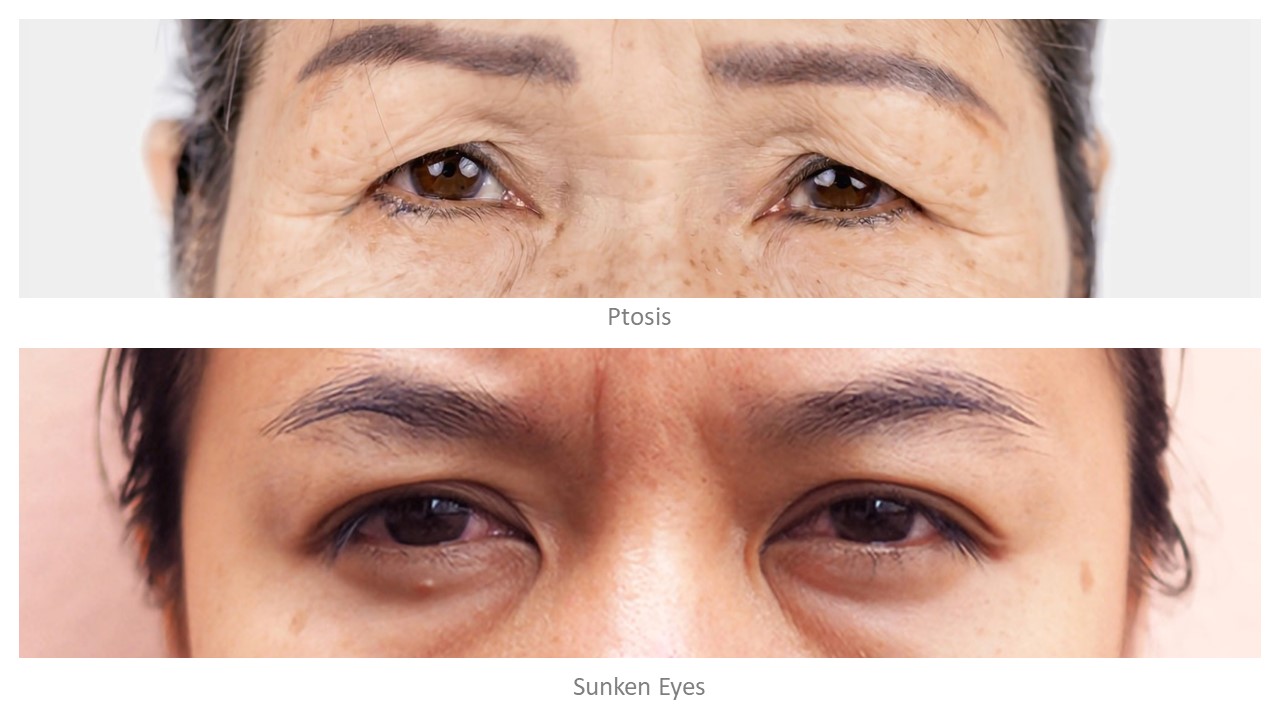
Sunken eyes, which are also referred to as Enophthalmos in medical terms, are often confused with Ptosis of the eyes. However, the two are very different from each other. While Enopthalmos is the sunken appearance of the eyes, Ptosis is when the upper eyelids start to droop over the eyes. However, while the two conditions are not the same, they may occur simultaneously.
Should You Be Worried of Sunken Eyes?
Sunken eyes may not only promote the appearance of dark circles and shadows around the eyelids but may also make the individual look tired even when they are not. Hence, even though having sunken eyes is not something you should be worried about medically, it can be a source of concern cosmetically. This is why a majority of individuals with sunken eyes prefer to get it corrected for cosmetic reasons.
Are Sunken Eyes Preventable?
If sunken eyes are caused by genetic reasons, which may include the structure of the underlying bone, it may not be prevented, and the sunken eyes may be present since birth. However, sunken eyes may be prevented if environmental and lifestyle factors cause it. The ways in which sunken eyes can be prevented include:
- Moisturizing the skin around the eyes: Moisturizing the delicate area around the eyes can prevent the sagging of skin, especially in aging individuals.
- Staying hydrated: Drinking plenty of water throughout the day may not only benefit the skin around the eyes, but it may also benefit the body’s other systems.
- Getting enough sleep at night: Getting at least 7 to 8 hours of sleep at night is another way to prevent the appearance of sunken eyes. This is because inadequate sleep can promote dullness around the eyes.
Do Home Remedies Work For Sunken Eyes?
Certain changes in lifestyle factors and home remedies are recommended for the correction of sunken eyes. While these may not entirely treat sunken eyes, they can improve their appearance to a certain degree. These home remedies include using tea bags, almond oil, cucumber slices, and an ice pack.
Tea Bags
Tea bags contain natural antioxidants and flavonoids, which are known to provide a number of benefits to the body. It is also considered an effective remedy for sunken eyes. The way in which eyebags work is that they improve the blood circulation around the eyes and also help relax the muscles around them. You may use two eye bags and keep each on one eye for 10 minutes. The type of tea bag used most commonly for this purpose is the black tea bag.
Almond Oil
Sunken eyes may also be naturally targeted using skincare grade almond oil. Almond oil is rich in vitamin E, which can be used to help nourish the skin around the eyes. Almond oil may be used alone for this purpose, or it may be combined with vitamin E oil to improve the condition.
Cucumber Slices
Cucumber slices may also be used to improve the appearance of sunken eyes. They are the most common remedy for dark circles and hollow-appearing eyes. This is because cucumber eyelids provide a cooling effect which may be used to reduce dark eye circles and puffiness around the eyes.
Ice Pack
Ice packs can reduce or shrink the dilated blood vessels around the eyes, which helps control the discoloration and makes the eyes appear less hollow. Applying ice packs or cold compressed around the eyes can also control the puffiness. This can be done by wrapping ice cubes in a cloth and massaging this gently around the eyes for a few minutes.
Available Clinical Treatments To Treat Your Sunken Eyes
There are two forms of clinical treatments used to treat sunken eyes, which include non-surgical and surgical options.
Non-Surgical Options
Non-surgical options for the treatment of sunken eyes include dermal fillers and lasers.
Dermal Fillers

Dermal fillers around the eyes are among the most commonly recommended treatments for sunken eyes. The fillers which are commonly used for this purpose are composed of hyaluronic acid. Hyaluronic acid is a natural substance that is composed in the body. Common brands with hyaluronic acid fillers include Restylane, Juvederm, and Belotero. Injecting the dermal fillers can help manage the volume loss caused by aging or unique bone structure. Moreover, since hyaluronic acid is a water-loving molecule, it attracts water and helps plump up the skin around the eyes as well.
Laser
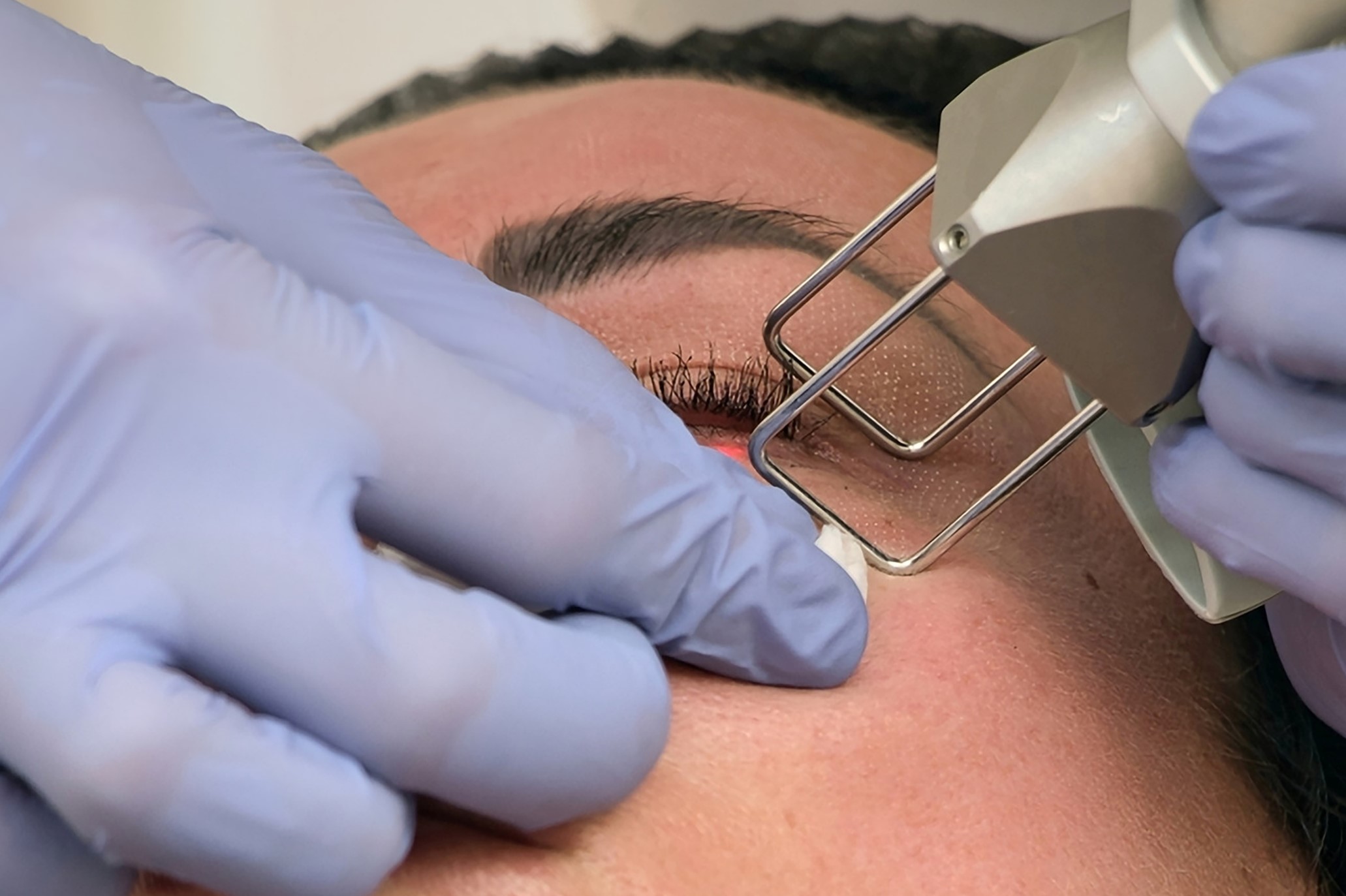
The CO2 laser is commonly used for a number of cosmetic reasons, one of which is to improve the signs of aging around the eyes. It is considered a non-surgical method to promote a youthful appearance of the skin by improving the tone and texture of the skin around the eyes. It also allows the tightening of the skin and improves the appearance of wrinkles and fine lines. While some individuals may only require one treatment, others may require a second treatment after a gap of 6 weeks.
Surgical Options
The surgical option for the treatment of sunken eyes includes Blepharoplasty and Fat transfer surgery.
Blepharoplasty
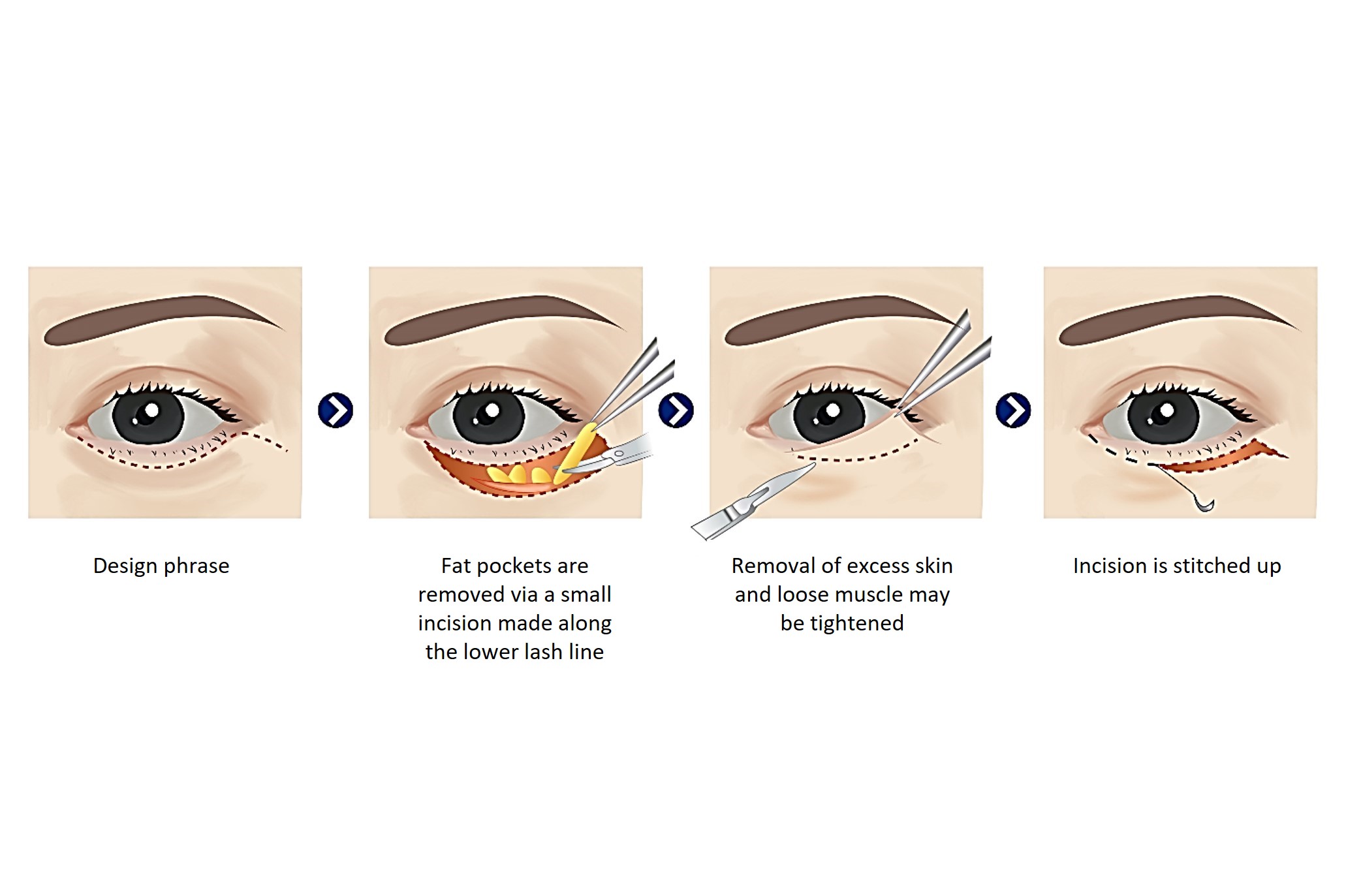
Blepharoplasty is also referred to as lower eyelid surgery. Conducting blepharoplasty on the eyelids can improve the appearance of fine lines and crow’s feet around the eyes. Moreover, the correction of the droopiness of the eyelids can make the eyelids seem less hollow and the person seems less tired. However, before the blepharoplasty procedure, the surgeon may ask you to come for an initial consultation and clinical assessment, which helps them determine if this procedure may be appropriate for you.
On the day of the procedure, the surgeon will start by making a small incision on lash line of the lower eyelid. From this incision, the excess fat and skin are removed, which was causing the droopiness. Moreover, any loose muscle may also be tightened. The incision for lower blepharoplasty is usually made in the crease; hence there is no obvious visible scarring after the procedure.
Fat Transfer
Fat transfer procedure conducted for the correction of sunken eyes is known as autologous fat transfer. It is also referred to as lipofilling or lipo injection and involves fat being transferred from one part of the body to around the eyes. This helps replace the lost volume and, in turn, also targets the shadows around the eyes. The areas of the body from which fat is extracted most commonly include the thighs, buttocks, and abdomen.

Fat transfer starts by extracting fat from one part of the body. This process is known as liposuction. Once the fat cells are removed, they are purified and processed so that they are ready to be injected into the eyelids. The process of injecting the fat cells under the eyes is similar to the process of injecting dermal fillers. However, since the fats are extracted from the individual’s own body, the risk of complication and possible hypersensitivity reaction is much lower. Moreover, fat transfer under the eyes also lasts much longer than hyaluronic-based dermal fillers.
However, the result may not be apparent immediately, and it may take the individual four months to see the intended effect of fat transfer. Since some of the transferred fat is absorbed by the body itself, the surgeon may inject a larger volume of fats. This ensures that even if some of the fat gets absorbed, there is enough left behind to provide volume to the area around the eye and help treat the sunken appearance.
Who and Where to fix Your Sunken Eyes
If you are seeking to improve the appearance of your sunken eyes, you may have to undergo consultation for a clinical assessment, understand the options that are available and are suitable for your case, understand the fees and be aware of all the risk factors. In either case, it is important to choose a certified surgeon who is qualified for the procedure and has years of experience. This will ensure better outcomes and lesser risk of postoperative complications.





